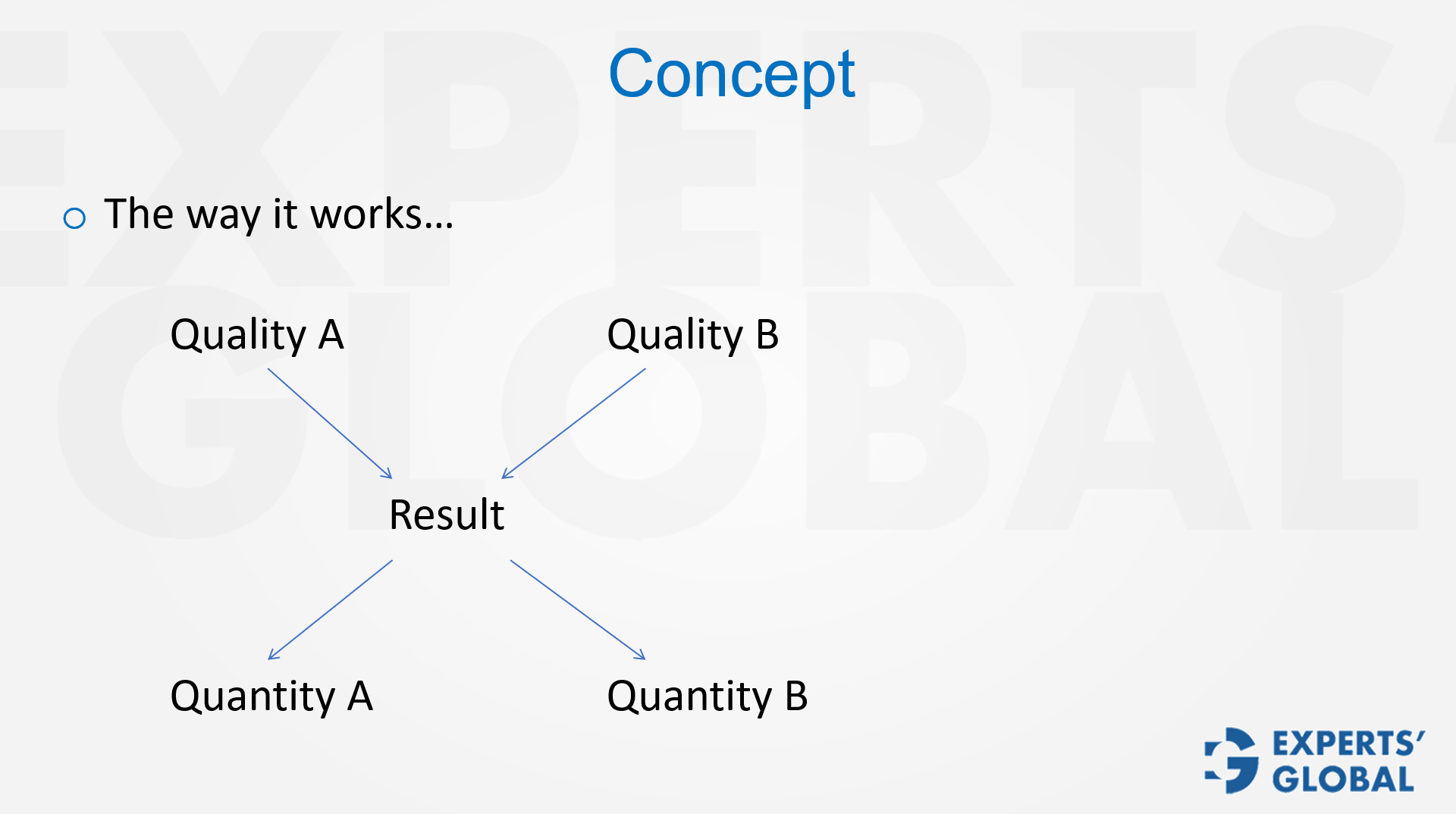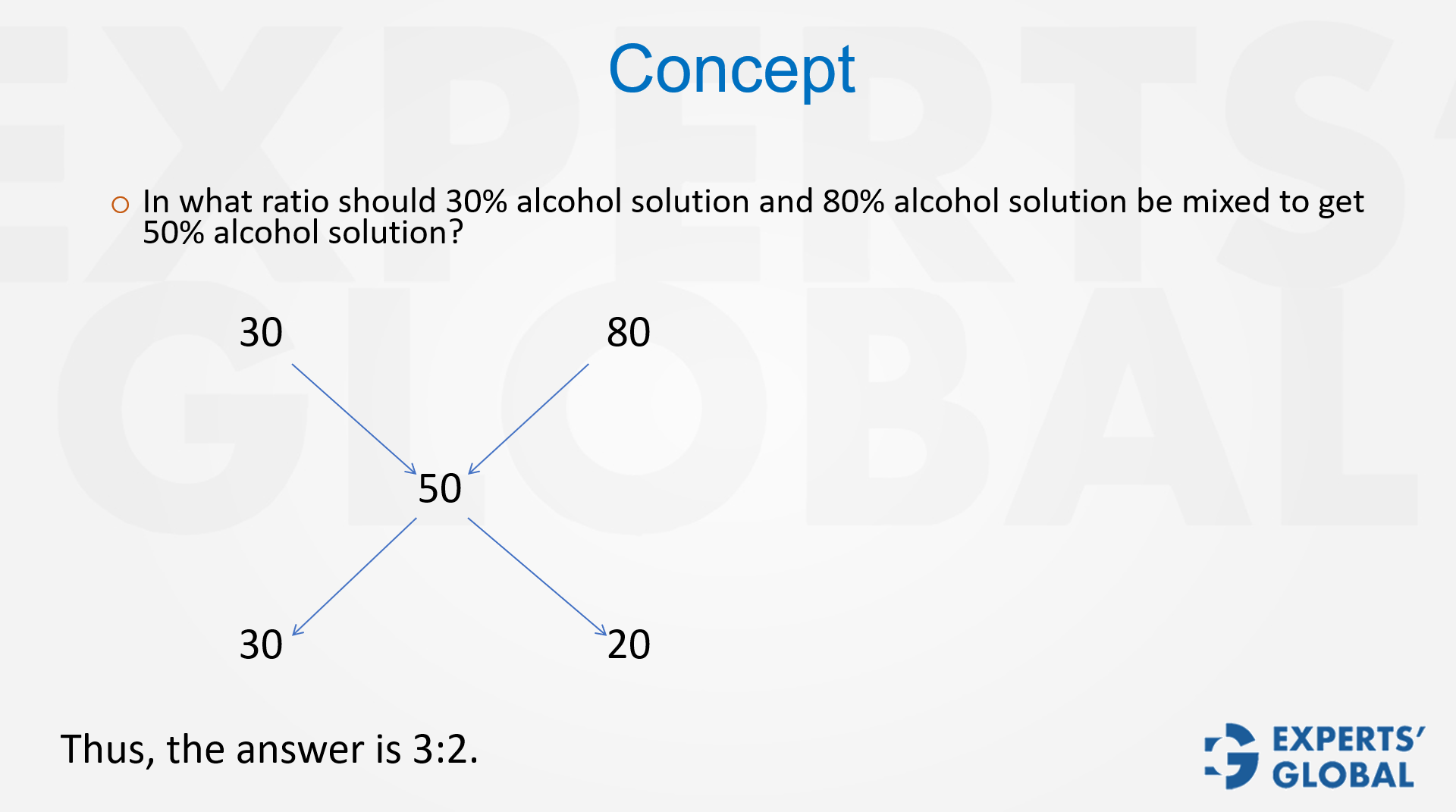Invest 30 seconds...
...for what may lead to a life altering association!
Help Line
- +91.8800.2828.00 (IND)
- 1030-1830 Hrs IST, Mon-Sat
- support@expertsglobal.com
...for what may lead to a life altering association!


Alligation is a quick ratio tool for GMAT mixture and weighted average problems. Use it when two source concentrations must be combined to reach a target overall concentration. It gives the mixing ratio directly and confirms the target lies between sources, cutting variables and arithmetic.
Many students get comfortable with weighted average questions on mixtures but struggle when the question is reversed: when, instead of asking the resulting concentration, the question asks in what ratio two components should be mixed to obtain a given concentration. This is where the concept of alligation comes in. Alligation is a systematic method that eliminates the need for trial and error. It allows you to place the two given concentrations and the resulting concentration in a simple setup, take differences, and immediately arrive at the required ratio. For example, if a 30% solution and an 80% solution are to be mixed to form a 50% solution, alligation quickly shows the answer as 3:2 without lengthy calculations. Such questions test not just arithmetic but also clarity of method. Building these instincts through systematic GMAT preparation and applying them in GMAT mocks ensures accuracy and speed under exam pressure.

In weighted average problems, the resulting percentage is calculated from the ratio of quantities. However, when the result is already given and the ratio must be determined, the method of alligation proves invaluable.


Notice that 50 is closer to 30 than to 80. This means that the solution with 30% concentration must have a greater share in the mixture, which matches the 3:2 ratio.
Alligation questions are not always covered in standard GMAT books, yet they can save valuable time. With a clear framework, they reduce confusion and prevent missteps in exam conditions. Strengthening such concepts through consistent practice on mock GMAT helps sharpen both accuracy and efficiency.
Clarity in alligation is a quiet lesson in balance. Begin with what you have, name what you want, and let the differences guide the ratio. The nearer value deserves less weight; the farther value deserves more. The same habit serves you beyond the test, when essays, timelines, and budgets must align in MBA admissions and scholarships. Look at your goal, measure the gap with honesty, and place your time where the gap is widest. When you set the frame and honor proportions, trial and error fades, and progress becomes deliberate. Keep a small sketch beside you, breathe, and trust the structure. With steady practice, balance turns from a trick into a daily habit.